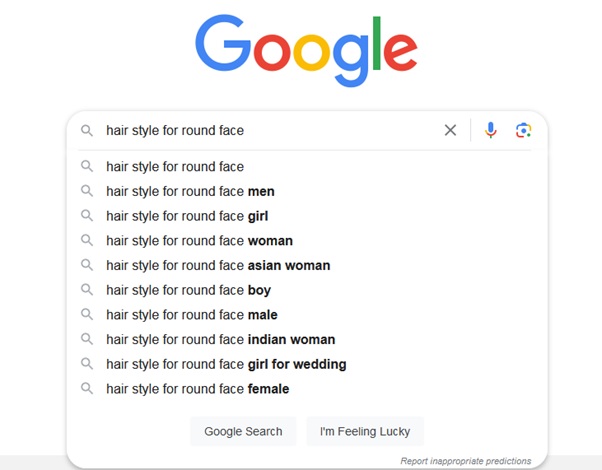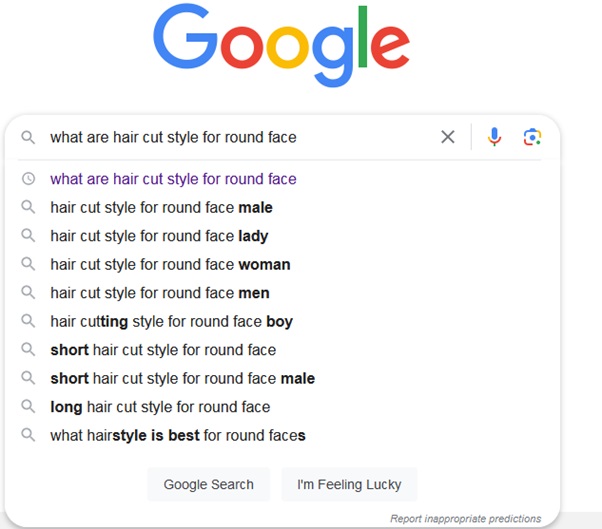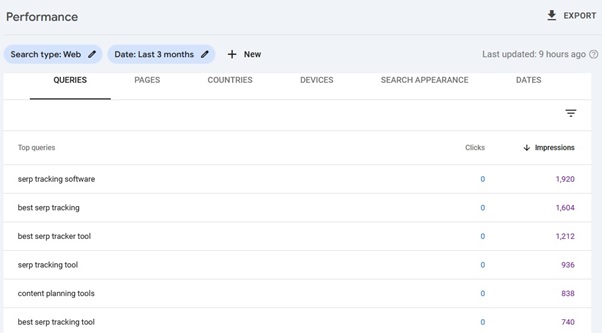Secondary keywords: How to find & use them
- Somayeh Niya
- May 12, 2024
When you want to write a blog post, choosing the right keyword is a concern. Main keyword is the primary keyword that you expand your content around. But how about secondary keywords? Many marketers overlook the power of secondary keywords.
In this article, I will explore the importance of secondary keyword in SEO and how to find and use them. First, let’s talk about what are secondary keywords in SEO.
What is a secondary keyword?
A secondary keyword is a term related to your main keyword. It’s a way to expand your content’s reach. Secondary keywords help you cover more topics that your audience cares about. They make your content more relevant and useful.
They can be close variations, synonyms of the main keyword, or related subtopics.
Why do you need secondary keywords for SEO?
There are two reasons:
- They increase your chance to rank for more keywords.
- They provide subtopics opportunities to optimize your content. It attracts more targeted traffic.
For example:
Primary keyword: oil-free moisturizers
Secondary keywords: oil-free cream, oil free facial moisturizer, what is an oil-free moisture, best oil-free moisturizers
Assume you write a blog post with the above primary keyword. Here secondary keywords are those subtopics and questions that your audience needs to know.
For example adding secondary keywords like ”what is an oil-free moisture”, ”best oil-free moisturizers” can help to add details to your content.
This allows you to reach a wider target audience.
Why are secondary keywords important in SEO?
Good content needs to provide necessary information for users. Using second keywords is a good strategy to achive this aim.
These types of keywords provide an opportunity to add more details to your content. They send a signal to search engines that your website is a good source for specific topics.
You need to use secondary keywords in your SEO basic strategies because:
- Secondary keywords have lower competition.
- They enhance user experience.
- These keywords create comprehensive content.
Lower competition
Secondary keywords usually are subtopics or long tail keywords. It means they have lower competition than the primary keyword.
Therefore, it’s a good idea to use them.
Let’s say you write a blog post for ”bali vacation”. A secondary keyword can be ”What are vacation spots in bali?”. It is a subtopic that has lower competition than the primary keyword.
Increase user experiences
User experience is a factor in ranking on Google. It means users spend more time on your webpage.
Secondary keywords can increase the time users spend on your website. Because these keywords add more relevant content and answer questions that users need.
This relevant content can keep them engaged and encourage them to explore more pages on your site.
In the other word, it increases the dwell time and decreases the bounce rate. So, it sends positive signals to search engines and shows your website provides valuable information to visitors.
Create comprehensive content
Google likes full content. If you cover more subtopics, your audience gets more information.
On the other hand, it also helps you write long-form content. So, using secondary keyword is useful both for audience and search engines.
Prevent keyword stuffing
Yes. You are right. It has gone the time Google ranks a page just for it has many keywords. But you need it yet. Sometimes using the same keywords can damage to user experience.
Here, secondary keywords can help you.
You can use a synonym of the main keyword as a secondary keyword. It means instead of using the primary keyword, you can use its synonym and prevent keyword stuffing in your content.
How to find secondary keywords for SEO?
You understand secondary keyword is important. Now, let’s dive into how you can find them for your SEO strategy.
Understand user's search intent
For choosing effective secondary keywords, the first step is knowing the search intent behind the primary keyword.
You can’t use every secondary keyword in your content. Unless it has the same search intent as your primary keyword.
Otherwise, it will damage your SEO efforts.
For example, a query like ”how to choose the best running shoes” has an informational search intent.
You can’t consider a secondary keyword like ”cheap running shoes” for it, because it has commercial search intent.
Brainstorm the idea
The next step to finding secondary keywords is brainstorming different variations, synonyms, and subtopics.
For example, let’s say you want to write an article about ”Organic food recipes”.
First, think about synonyms of the main keyword:
• Chemical-free food recipes
• Natural food recipes
• Healthy food recipes
• Pure food recipes
These are close synonyms of the main keyword.
Next, think about close subtopics, and long-tail keyword variations of the main keyword.
• Organic dinner recipes
• Organic food recipes ideas
• Organic food recipes ideas on a budget
• Healthy food recipes for breakfast
You can add each of these secondary keywords and expand your content around it. But don’t forget:
- As the name implies, a secondary keyword is just secondary. Don’t forget that the primary keyword is your main topic.
- Secondary keywords with lower KD (keyword difficulty) are easier to rank.
Analyse your competitors secondary keywords
The third step is analyzing your competitors.
Analyze their blog post to find the keywords they are ranking for.
Why analyzing competitor’s secondary keyword is important?
Because it helps you find the gaps and opportunities that they may have missed. So, it helps you to become an outstanding resource for your audience.
Just don’t forget, competitor analysis is not about copying their keywords; Just it gives you insights to improve your own keyword strategy.
Put yourself in the customer's shoes
Like always the needs and expectations of your audience are important. Try to find secondary keywords that address their specific concerns and questions.
It helps you to create content that helps your audience and establishes your credibility.
For example, your primary keyword is ”women’s shorts”.
Ok, what are women’s needs and expectations for shorts?
They need to know about:
• Period shorts
• Women’s period underwear
• Menstrual sleep shorts
Remember, your secondary keywords should align with the intent of your target audience.
Search for their needs and address them. It attracts more qualified traffic and you will build a loyal customer base
Use SEO tools
The fourth step for finding secondary keywords is using keyword research tools.
These tools provide search volume, competition, and related keywords that you may not have considered.
Some keyword research tools include Google Keyword Planner, SEMrush, and Ahrefs.
After you enter your primary keywords in these keyword research tools, it gives you many keyword ideas.
Search for those keywords that are synonyms of the main keyword. Or the keywords that can provide subtopics.
Use Google auto suggestions
When you type your primary keyword in the Google search bar, it gives you other keyword options.
Usually, they are more specific than your primary keywords. If it aligns with the primary keyword, you can use them as subtopics. This subtopic will be your secondary keyword.

In addition, using Google auto suggestions as a way to find secondary keywords has an important benefit: It mostly suggests secondary keywords that their search intent will be the same as primary keywords.

This is an example of informational search intent. As you see other suggestions also have the same search intent.

In this example, the primary keyword has commercial search intent. It also is the same for many of the other suggestions.
Organize keywords effectively
In previous steps, you found the secondary keywords.
Now, you have a secondary keyword list. It’s the time to organize them effectively.
Your secondary keywords are a collection of synonyms of the main keyword or subtopics.
Group them into categories based on their relevance to different subtopics or sections of your page.
For subtopics create content with subheadings that include that secondary keyword. Inside the subtopic use your primary keyword too.
And, use synonyms instead of your primary keyword naturally. For example, if you need to use a primary keyword two times in a sentence, use a synonym instead.
This will make it easier for you to create targeted content and optimize your page for maximum visibility.
How to use secondary keywords in your content?
Now that you have an understanding of how to find secondary keywords, let’s use practical ways to include them in your content.
One effective way to include secondary keywords in your content is by using them in subheadings.
Subheadings break up your content and make it more readable for the audience.
It also provides an opportunity to naturally use additional keywords.
Another strategy is using secondary keywords in image alt text. Alt text is an important element for web accessibility and SEO purposes.
It describes the content of an image to search engine crawlers.
So, use more images in your content. It helps to have sufficient space to include secondary keywords in your image alt text.
Also, you can add secondary keywords in the body of your content. Just don’t forget you should use them naturally in content. Otherwise, it won’t be effective.
How to improve your published content by using secondary keywords?
If you already published content and you want to improve your ranking by using secondary keywords, Google search console helps you to do it.
Go to Google search console and log into your account.
Then, go to the Performance tab and filter it by impressions.
Here you can check which query has the highest impressions.

For example, in this report below keywords are in one group and they pulled impressions for a specific blog post.
• best serp tracking
• best serp tracker tool
• serp tracking tool
• best serp tracking tool
• best serp tracker
• serp monitoring tool
• serps tracking tool
If they aren’t your primary keywords, you can use them as secondary keywords and optimize related blog posts.
These keywords indicate your page shown on the search result page for this query. Using them as synonyms of the primary keyword can help to improve your SEO. Or use them as subtopics in your content.
By doing this strategy you have more chance for gaining clicks for these keywords.
Secondary keywords vs semantic keywords (LSI Keywords)
Secondary keywords and semantic keywords (LSI keywords) are often used interchangeably. But they aren’t the same. There are some key differences between them.
Secondary keywords are specific keyword phrases related to your primary keyword.
They provide details to optimize your content.
For example, secondary keywords for ”how to make sandwich” are:
• Easy recipe to make sandwich
• How to make a sandwich without bread
Semantic keywords, on the other hand, are terms and phrases that are closely related to your primary keyword in terms of context and meaning.
They help search engines understand the topic and relevance of your content.
For example, some semantic keywords for ” how to make sandwich” are:
• sandwich
• bread
• cheese
• making sandwiches
• recipes
• butter
• learn
• making
• condiments
• knife
A good SEO strategy needs both secondary keyword and semantic keyword. These keywords provide chances of ranking higher in search results.
Examples of secondary keywords
To show the effectiveness of secondary keywords, let’s look at some real-life examples from different industries.
Example 1: Fitness Industry
Primary keyword: losing weight naturally
Secondary keywords: Lose weight fast and safely, reduce weight, lose fat naturally, weight loss tips for beginners, effective workouts for weight loss, and nutrition tips for sustainable weight loss.
For instance, if you are a personal trainer in weight loss, you can create content that focuses on the above secondary keywords.
It helps to attract individuals who are looking for weight loss solutions. It helps to position yourself as an expert in this niche.
Example 2: Technology Industry
Primary keyword: How to Choose the Best Web Hosting Service?
Secondary keywords: Web hosting provider, Types of web hosting, Tip to find the best hosting services
These secondary keywords can create full content. This is the content that every user wants to see on your webpage.
FAQ
1-What are secondary keywords?
Secondary keywords are closely related to the primary keywords and add more details to the main content. They can be synonyms or close variations of the primary keywords
2-How many secondary keywords should I use?
You can use 3-4 secondary keywords for every primary keyword in a webpage.
3-Which is more important, primary or secondary keywords?
Primary keywords are the most important keywords. Every webpage must have a primary keyword. But secondary keyword isn’t a necessity but they help to SEO of a webpage.
What is the difference between secondary and LSI keywords?
LSI keywords are conceptually related to the primary keyword that helps search engines find what your page is about. But secondary keywords are synonyms or close variations of the primary keyword that add more details and context to the main content.
What is a secondary keyword example?
Primary keyword: Benefits of yoga for your body
Secondary keyword: Best Yoga tips
